Welcome to Old School Month on Eternal Central. We’re looking at a different Old School 93-94 deck each day of the month. Today’s deck is Mono Brown UrzaTron, appropriately named for playing Mishra’s Workshop and the Urza’s lands from Antiquities, in an aggressive mono brown shell, full of artifacts. Here is a recent version I played.
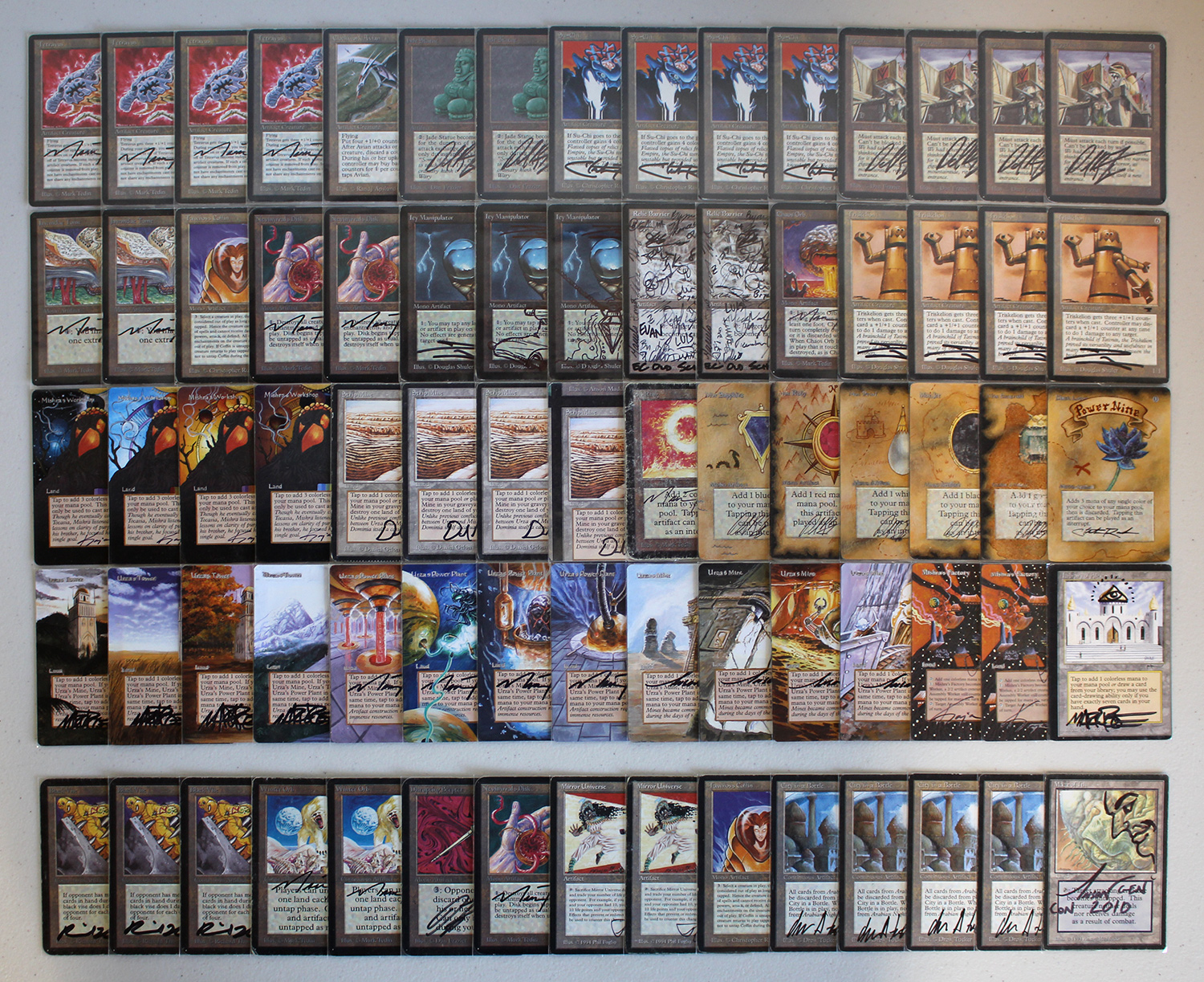
Constructing Mono Brown UrzaTron
This is a deck that wants to make a ton of mana quickly, and use it to pump out large artifact creatures, faster than the opponent can keep up. Mishra’s Workshop and the Urza’s lands allow you to cast creatures ahead of the standard mana curve, by virtue of using lands that produce more than one mana at a time. This breaks the “normal” cost/mana curve, as your lands will consistently produce more than the opponent’s lands. Similarly to Vintage Workshop decks (which utilize Workshop and Ancient Tomb), this deck eschews dual lands and the blue Restricted List cards that are typically seen in every blue deck.
This deck is not one for the meek, as the presence of Mishra’s Workshop and a bunch of fast mana does not translate particularly well to a budget strategy. Mana Vault is a decent substitute if on a budget, but obviously doesn’t offer the same reusability that Workshop does.
Creature Choices
When designing for a Workshop and Urza’s land mana base, creature considerations can vary from the standard 4-drops to even as high as something like the 9 mana Colossus of Sardia. The payoff for assembling the UrzaTron (Power Plant + Mine + Tower) is 7 repeatable mana per turn, so casting bigger creatures is more rewarding. But the presence of Strip Mine makes this a questionable – and fair – gambit that you must consider. To make the deck more aggressive and consistent I like to plan in the middle somewhere, with a bunch of 4 to 6 casting cost cards. This can make for explosive hands with Workshop, while still giving you a decent payoff should you assemble the UrzaTron, even in the face of one or more Strip Mines.
At the low end most people will begin with Juggernaut, as it can deliver five damage per turn. But it dies to everything from a pumped Mishra’s Factory to Chain Lightning to all of the standard white removal package. It is good, but fragile.
Su-Chi is harder to remove, but in the American metagame that includes Mana Burn as a regular rule, this must be taken in to account when sequencing plays. It is often better to have a Factory or Jayemdae Tome in play before casting Su-Chi, because if it is killed you can funnel the mana in to something else in order to avoid mana burn.
Jade Statue also survives most non-Disenchant removal, as well as Balance and Wrath of God. It costs a small amount of mana to operate each turn, but stands up well to most of the commonly played creatures in the 93-94 format. Likewise, The Hive and Serpent Generator can be considered, but those are probably better suited for a more controlling and grinding build, rather than one trying to end the game as fast as possible.
Clockwork Avian sits at 5 mana, and is another colorless threat that flies over Moat, and provides some flexibility. A couple of them should be in your stable for consideration in this deck.
Triskelion is probably the MVP creature in this deck, as it annihilates weenie hordes, and significantly complicates any potential combat math for the opponent. The ability to remove counters at instant speed to damage the opponent also means it is going to do some damage to the opponent, even if they already have the Swords to Plowshares or Disenchant in hand to deal with it.
Tetravus is another auto-include in Workshop decks because of the ability to fly over Moat, as well as block Serendib Efreet and Serra Angel, and offers the critical ability to separate in to up to 4 individual fliers during your upkeep, in order to reduce the effectiveness of an opponent’s top-decked removal spell.
Finally, Clockwork Beast is another card that I rotate in and out of this deck. It is very powerful, but at the mana cost, I usually don’t want more than a couple of copies, at most.
Draw Engines
Unlike most other decks, this one doesn’t need a robust draw engine, because its focus is pretty singularly on casting a cavalcade of threats to end the game as soon as possible. There are a couple of obligatory Jayemdae Tomes present, in order to funnel mana from Su-Chi, and to draw cards when you don’t have anything better to use your mana on a given turn, or when the game comes down to top-decks.
This particular version skips out on Howling Mine, in favor of more creatures, and a more aggressive stance. If you would like to experiment with a slower, grindier build, Howling Mine is a fine addition, which can be made asymmetric when used in conjunction with Icy Manipulator and Relic Barrier.
Constructing a Mana Base
Mishra’s Workshop is the best card in the deck, repeatedly tapping for 3 mana to cast your whole deck. Urza’s Tower, Urza’s Mine, and Urza’s Power Plant are somewhat weak on their own, but when combined make tons of mana (and can let you easily play through things like Energy Flux, provided you have enough lands in play). The opponent is likely going to want to destroy your Workshops first, often leaving the Urza’s lands free to operate.
Strip Mine is a natural inclusion in this deck, acting as a Time Walk many times, rewinding the opponent’s mana development a turn, hopefully while you are attacking with one or more creatures. Using Strip Mine on an empty board is often not the best idea.
Mishra’s Factory is fine as another threat, but is weaker than all of the lands above in here. Similarly, Desert provides a unique ability while also providing the ability to tap for mana, but is generally weaker than the aforementioned options (unless you play in an environment full of weenie creatures).
Fellwar Stone is another option worth considering in this deck, but one that often gets cut for more utilitarian lands. Extra Mishra’s Factories are probably better than Fellwar Stones, for example.
Removal
Being that this deck is colorless, it doesn’t have access to the most brilliant spot removal that other colors offer, but it can provide some utilitarian taxing and control resources, as described below.
Nevinyrral’s Disk offers a reset button, for things that you would otherwise have trouble dealing with, or that can offer a trump to your own strategy. By the time you are ready to blow this up in the mid to late game, you will often have a solid footing on mana, with most of your lands producing multiple mana, so it doesn’t really matter if you wipe away a bunch of your own Moxen in the process of clearing the opponent’s board.
Icy Manipulator is adept at locking down the opponent’s mana, or at simply tying up their creatures on their turn, so yours can swing through. A few copies are usually optimal, so you draw at least one, without having them clog up your opening hand.
Likewise, Relic Barrier is useful for handling opposing Moxen or Mishra’s Factories, further tying up the opponent’s resources.
Tawnos’s Coffin is a nice, but inefficient removal spell. It can exile an opposing creature temporarily, or shield your own threats from removal. I like one or two in the deck, and another in the sideboard. It is important to remember that it keeps a memory of how many counters your creatures had when they enter the Coffin, which they will also get when they come back in to play, in addition to new counters (so for example if you put a Triskelion with 1 counter in to the Coffin, it will come back in to play with 1 plus the 3 new counters, for a total of 4 counters). This is another avenue for beating something annoying like Moat.
Designing the Sideboard
City in a Bottle is probably your most important sideboard card, as it can efficiently handle a variety of threats along the cost curve, and must be dealt with before some opponents can play any more threats. Decks like RUG Tempo and UR Burn (relying on Serendib Efreet and Flying Men) must deal with this, as they are unlikely to have enough burn to kill you outright before they succumb to your artifact creatures.
Mirror Universe is a great tool against the burn-heavy decks, providing you the necessary life buffer for your creatures to finish off the job, before you can get burned out.
Disrupting Scepter can come down on Turn 1 and offer repeatable disruption, which the control opponent must deal with before moving on to the rest of your threats, or they will lose in short order as you sap them of resources.
Winter Orb is a card that provides a unique angle of attack, but one that it probably not good enough for the main deck in an aggressive deck. It’s the kind of card you’ll want to use carefully, against the decks that rely on tapping all of their lands nearly every turn.
Maze of Ith is a great card in this particular deck, as we lack access to other forms of spot removal, and Maze is the closest thing to Dismember that we can use. Similarly, Island of Wak-Wak can help hold off a quick flying creature from the opponent, but is worse than Maze. If you have room I’d probably fit in an Island of Wak-Wak though, so you can more reliably see at least one of these against a deck like UW Skies (Moat plus flying creatures).
Finally, Black Vise is an interesting tool against the Ivory Tower decks like hard control variants, Howling Mine decks, and Land Tax decks often sport. It’s not good enough for the main deck, but a nice tool to have when you want it.
Playing Mono Brown UrzaTron
The plan is to cast fast creatures that are larger than your opponent’s, and beat them down as fast as possible. Seek out opening hands that have plenty of mana and quick threats, and go from there. The deck is roughly half mana, so even if you get Strip Mined repeatedly, you are likely to keep trudging along and drawing more mana sources to play the rest of your hand.
There is plenty of removal in the format, so I like to often lead with threat 1B first, and after it is dealt with, then toss out the better threats on to the battlefield. Robots like Triskelion and Tetravus are often free to complete clean-up duty after you have exhausted your opponent’s removal.
Ten Opening Hands with Mono Brown UrzaTron
Here are ten randomly drawn opening hands with the deck (in order, and not manipulated in any way), and a few brief words with how I might look to play said opening hands.
Opening Hand 1

With Library, Strip Mine, and plenty of other mana and threats, this is an easy keep. Some consideration can be given to leading with Strip Mine instead of Library (to bait an opposing Strip Mine), but this is a great opener even if Library is immediately dealt with.
Opening Hand 2

Artifact acceleration, Triskelion, and the naturally drawn full UrzaTron make this another snap keep. I’d lead with Mishra’s Factory, pass. This will shield your UrzaTron from Strip Mine initially, and doesn’t give the opponent any more information about your opener. Then on the second turn you can play another land, drop your artifact acceleration in to play, and cast Triskelion. This will also allow you to attack with Factory faster, should something happen to this plan.
Opening Hand 3
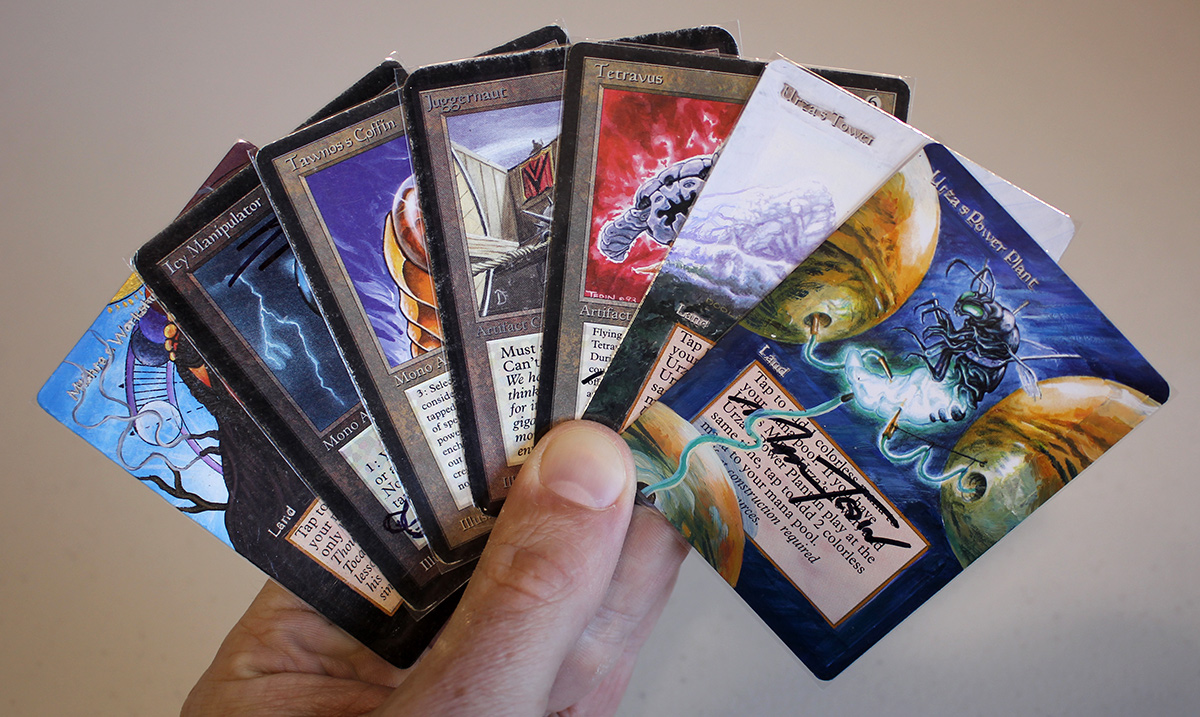
Workshop and two-thirds of the UrzaTron package in hand provide solid mana, and we have plenty of threats to go along with this. I’d probably lead with an Urza’s land on the first turn, then drop the Workshop and Juggernaut on the second turn, and then Icy Manipulator on the third turn (with the ability to also use it to tap down a blocker).
Opening Hand 4
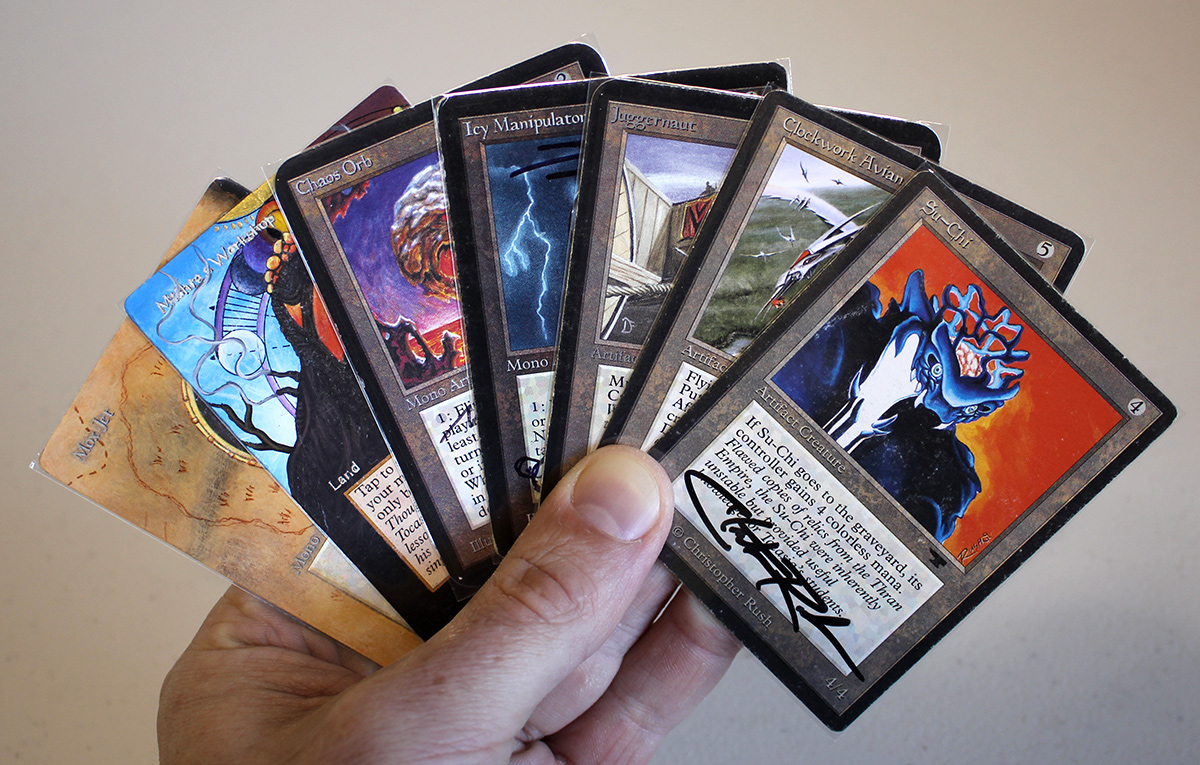
With only a Mox and a Workshop, this hand has explosive but fragile mana production. With an array of 4-drops and a couple of effective removal pieces, I’m going to keep it though. If you are playing against a Lightning Bolt deck, the first turn play is Su-Chi. If you’re playing against a deck laden with white removal, the play is Juggernaut. Even if Workshop immediately gets Strip Mined, half of this deck is mana, so the odds are that we’re going to continue to draw out of that problem as the first few turns unfold.
Opening Hand 5
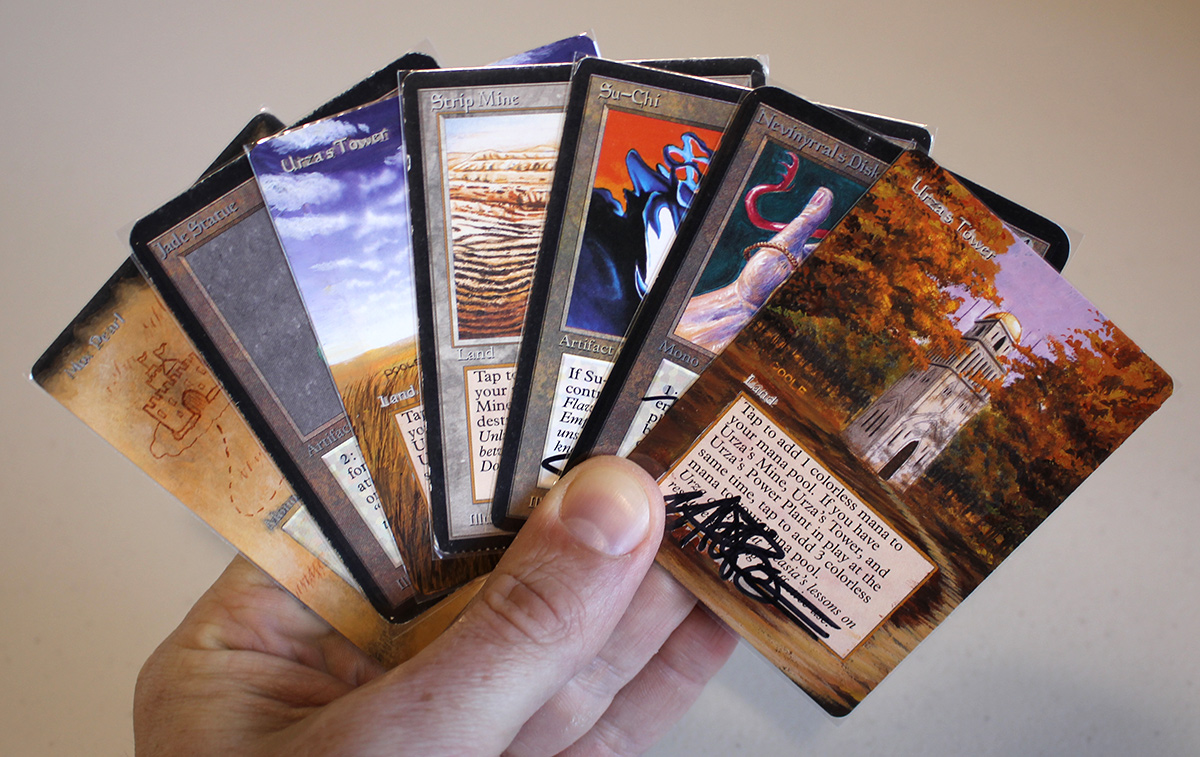
Strip Mine, a Mox, and two thirds of the UrzaTron package in this opener are enough mana to start with, and we have a few threats to go along with it, so it’s a keeper. I’d lead with Strip Mine and pass, and then work towards a Turn 3 Su-Chi or Jade Statue, depending on what the opponent is playing. We don’t yet have a mana-sink to pour mana in to should Su-Chi get Disenchanted, so the Jade Statue might be better if this is going to be a grindy match.
Opening Hand 6
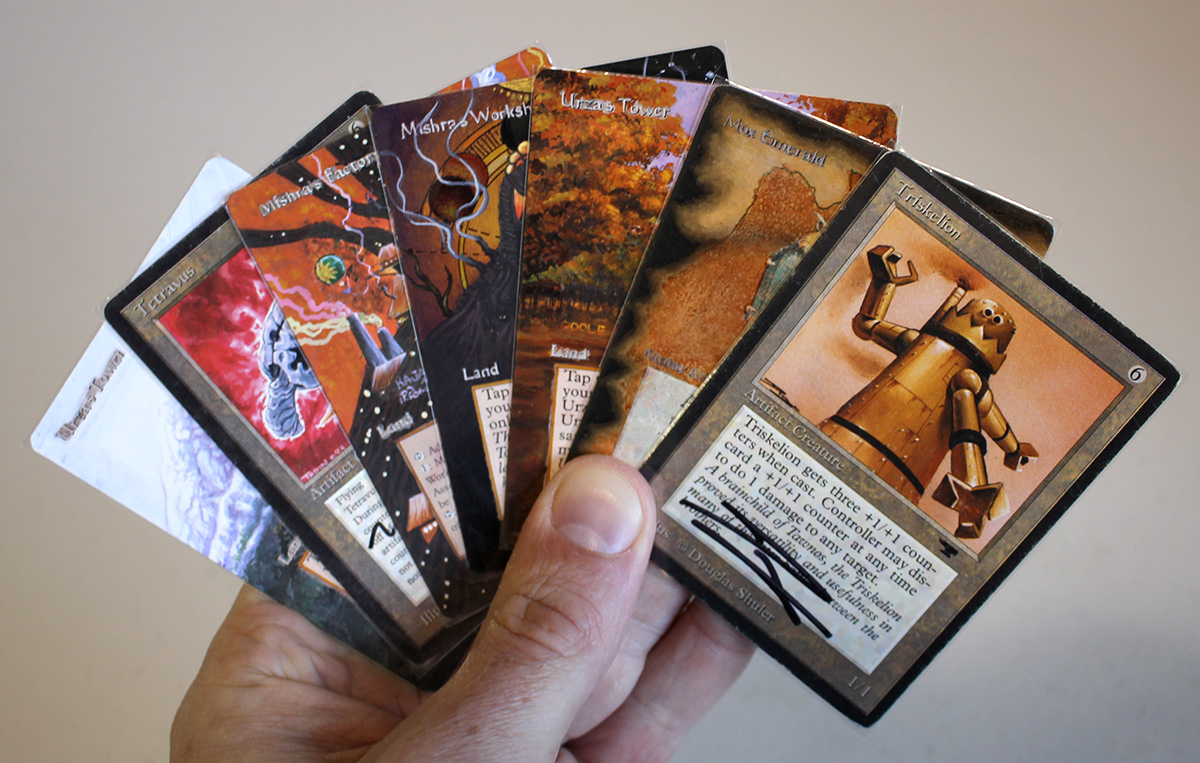
A Workshop-fueled mix of mana and threats make this keepable. I’d lead with Factory on the first turn, which would allow you to attack on the second turn if the opponent does nothing. If they are holding up a suspected Lightning Bolt though, it’s probably better to just skip attacking there, which would rewind your mana development a turn. The goal is to work towards the third turn Triskelion, and fourth turn Tetravus.
Opening Hand 7
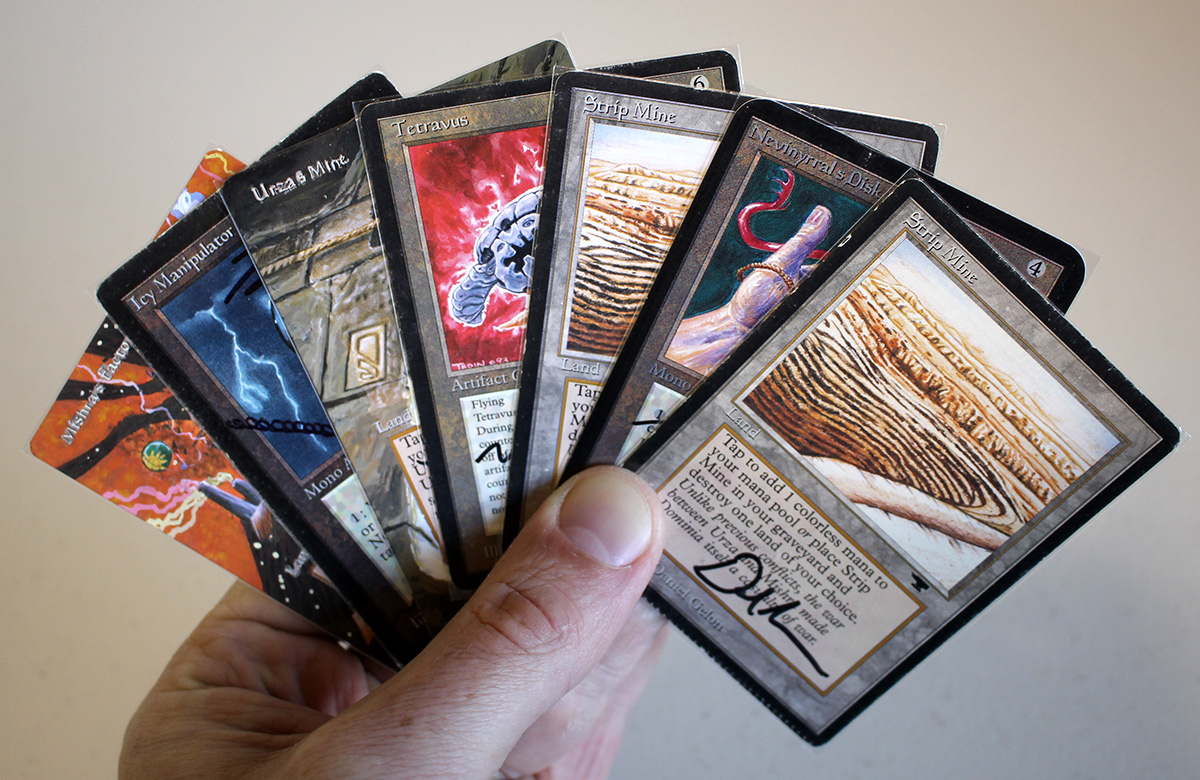
This hand is slow, but contains mana, multiple Strip Mines, removal, and a threat. It’s good enough to keep. If the opponent develops a crazy board presence Nevinyrral’s Disk can reset it back our favor, or Icy Manipulator can hold off a single threat until we develop further.
Opening Hand 8
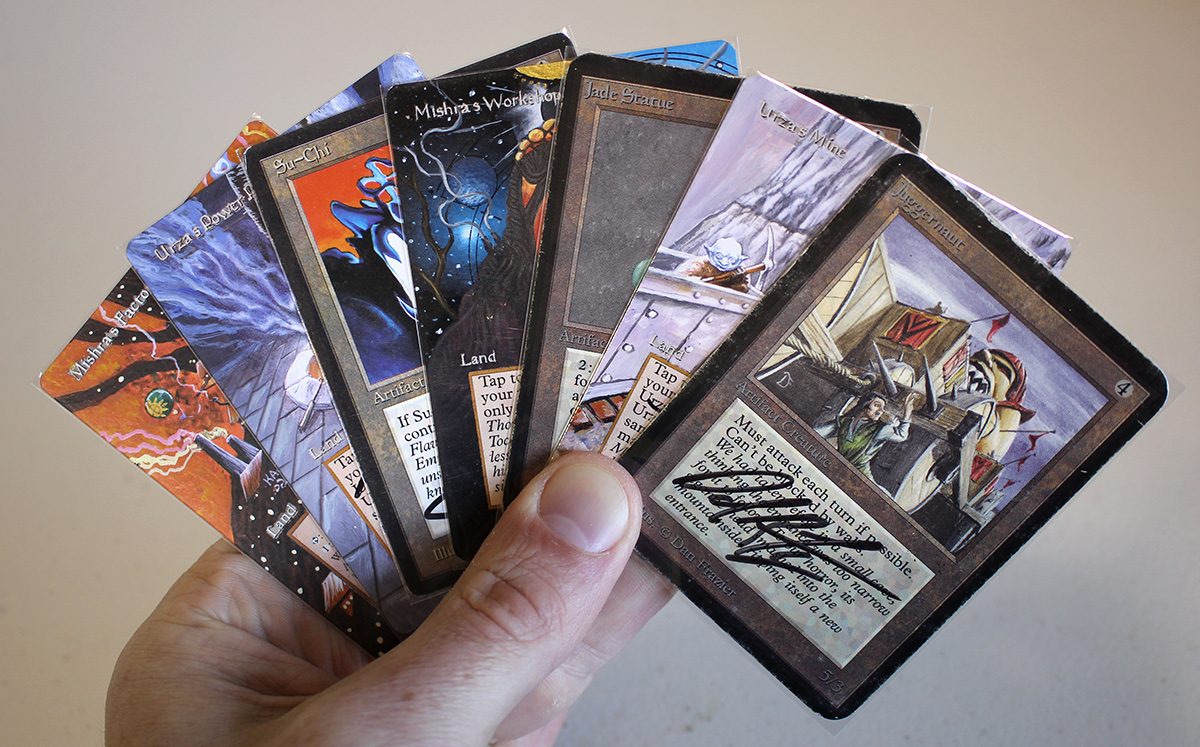
Like Opening Hand 4 above, this hand represents a Workshop plus early beaters, and you must use your judgment about how to sequence Juggernaut, Su-Chi, and Jade Statue, based on what you can divine from the opponent’s mana base or actions.
Opening Hand 9
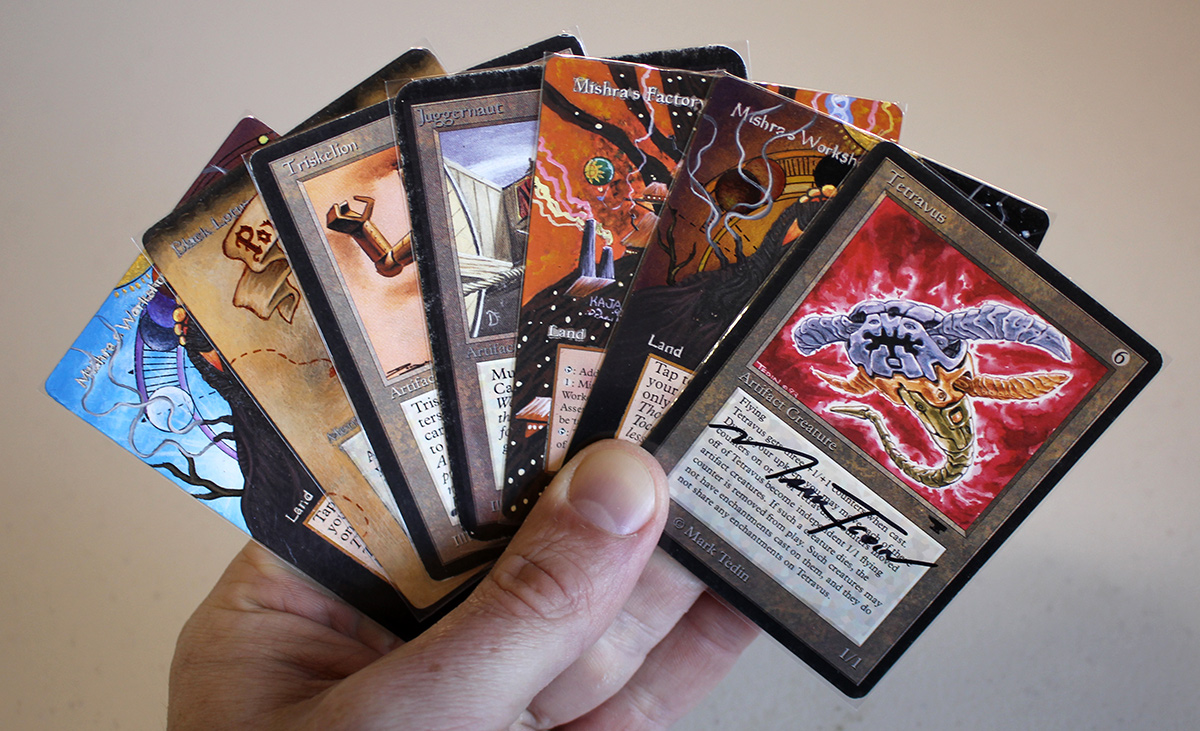
This may be the best hand of the bunch so far, with tons of explosive mana production and threats. A first turn Triskelion, second turn Tetravus, and third turn Juggernaut, with Factory backup, are a heavy dose of large threats that should lead to victory.
Opening Hand 10
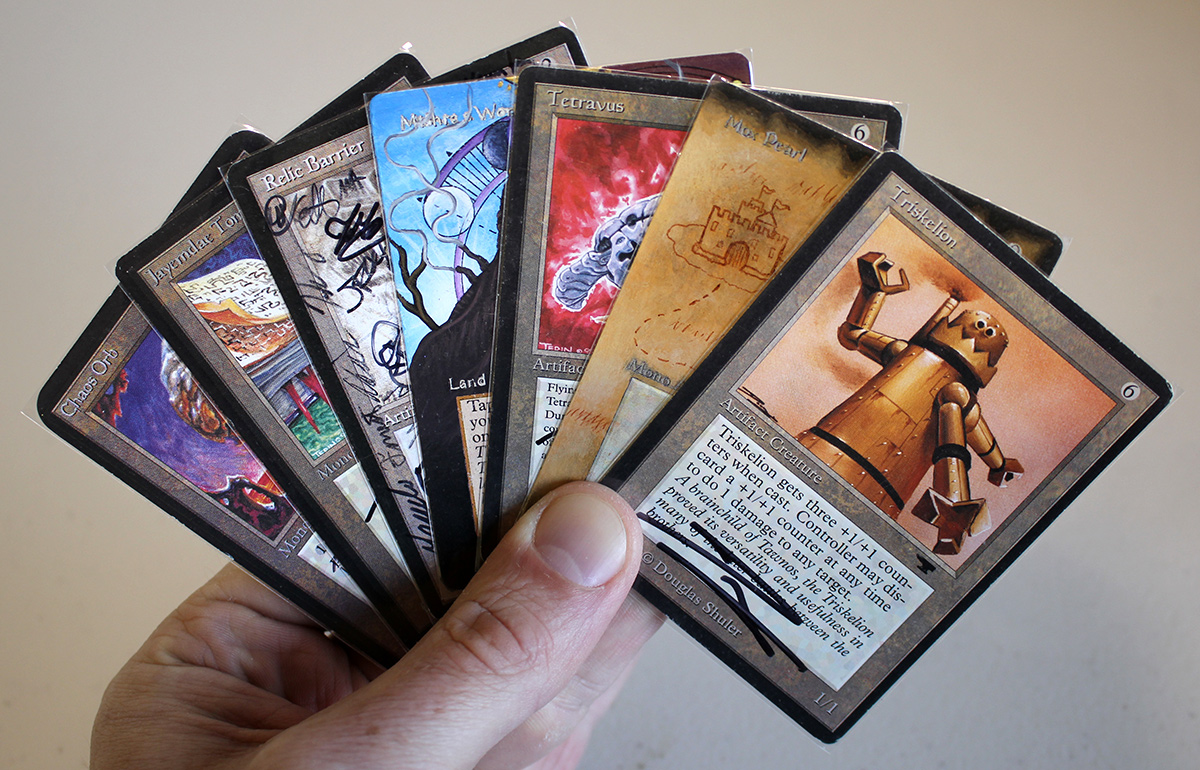
With only Workshop and a Mox as our mana sources, this once again represents a conundrum about whether this hand is good enough. I’d probably keep it though, and lead with Relic Barrier and Chaos Orb on the first turn, the pair of which should be enough to buy us a couple of turns to find enough mana to unlock the rest of our hand.
Concluding Thoughts
This is a powerful but linear deck. It pushes big mana production, and eschews taking time to trade one-for-one with the opponent’s resources, in order to just present a bunch of huge threats as fast as possible. Experiment with it, and see what you like and dislike. It can always morph in to other colors, or in to a slower controlling shell, with the Howling Mine + Winter Orb + tappers package instead.
Stay tuned to Eternal Central for more sick 93-94 brews all month long. Thanks for reading.

